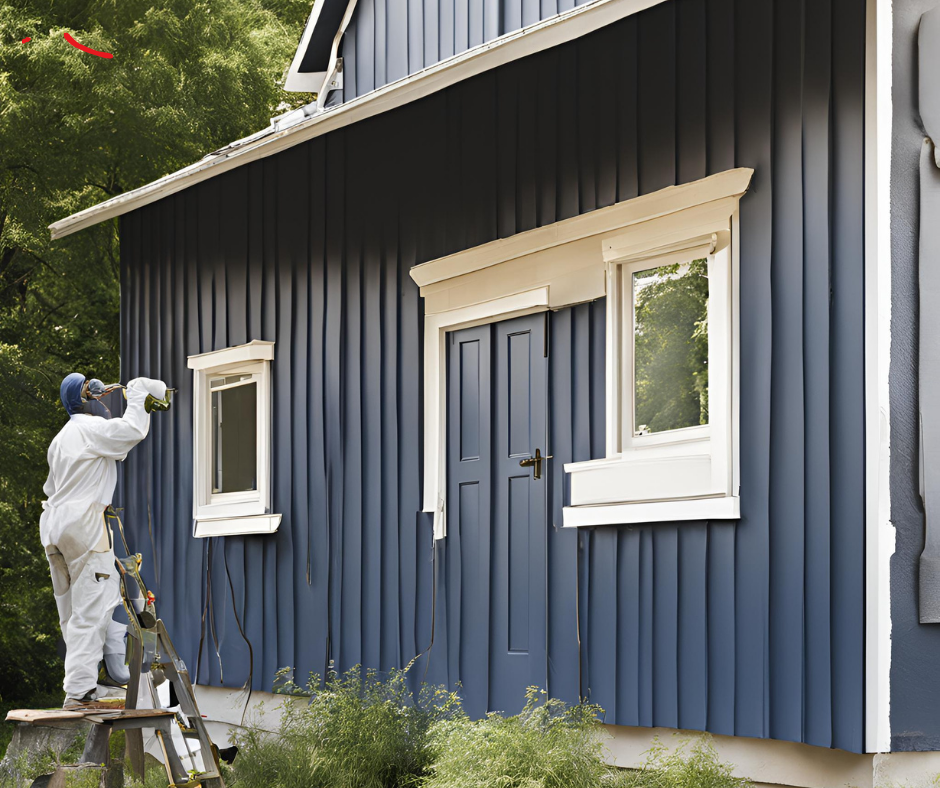Buying a New Home? How to Decide Between DIY and Professional Interior and Exterior Painting
DIY Vs. Professional painting

Buying a new home is an exciting journey, filled with visions of personalizing your space to reflect your unique style. One of the first choices you'll face is deciding between DIY home painting and enlisting professional painting services for your interior and exterior needs. This decision hinges on several factors, including the current condition of your home's paintwork, the scale of the project, and your own DIY skills. Understanding the cost of painting and the potential risks involved in tackling the job yourself can guide you toward a choice that ensures your home not only looks stunning but also maintains its value. In this article, we'll provide home painting tips and expert painting advice to help you navigate this decision, offering insights that promise satisfaction and enhance your home improvement experience.
Evaluating Your Painting Needs
Before embarking on your home painting journey, it's essential to evaluate the specific needs of your project. This involves understanding the current condition of your home's paintwork, determining the scope of the project, and assessing your own capabilities when it comes to DIY home painting.
Assessing Current Paint Condition
Assessing the current condition of your home's paint is the first critical step. Examine whether the existing paint is peeling, faded, or outdated. A thorough inspection can reveal areas that require more than just a fresh coat of paint, possibly needing repairs or priming first.
- Start by walking through each room, noting areas with significant wear or damage.
- Check for signs of moisture damage, especially near windows and doors.
- Pay attention to surfaces that might need special treatment, such as textured walls or ceilings.
Understanding the initial state of your surfaces can inform the amount of work required. If the paint is in generally good condition, a simple refresh might suffice, but more extensive degradation could necessitate professional intervention.
Understanding Project Scope
Understanding the scope of your painting project is crucial for planning. This encompasses the size of the area to be painted, the number of rooms, and any intricate or challenging details like high ceilings or detailed molding.
- Calculate the total square footage of the surfaces you plan to paint.
- Determine if there are any exterior areas that need attention, such as siding or trim.
- Identify any special requirements, like scaffolding for tall spaces or specialized paint for specific materials.
A well-defined scope helps in estimating the timeline and resources needed. Projects with extensive areas or unique challenges may benefit from the expertise of professional painting services, whereas smaller, straightforward tasks might be manageable as a DIY project.
Gauging Your DIY Skills
Gauging your own DIY skills can help you decide whether to tackle the painting yourself or hire professionals. Consider your previous experience with similar projects and your comfort level with painting techniques.
- Evaluate past DIY projects you've completed successfully.
- Consider your ability to handle tools and equipment required for painting.
- Recognize your patience and attention to detail, which are crucial for achieving a quality finish.
If you have a strong track record of DIY success, you might find tackling the painting both rewarding and cost-effective. However, if you lack confidence or skills, professional painting services can deliver a polished result without the stress and potential mishaps.
Weighing Costs and Benefits
It's vital to weigh the costs and benefits of DIY versus professional painting. This section provides insights into calculating the financial outlay, understanding potential risks and rewards, and comparing the time and effort involved in each approach.
Calculating Cost of Painting
Calculating the cost of painting involves accounting for materials, tools, and any additional expenses for either DIY or professional options. Understanding these costs upfront can help in budgeting effectively.
- Materials: Paint, primer, brushes, rollers, and protective coverings.
- Tools: Ladders, sprayers, or specialized equipment if necessary.
- Labor: If hiring professionals, obtain quotes to compare costs.
Using a combination of estimates and actual prices, create a budget that considers both initial expenses and any potential contingencies. Additionally, factor in the long-term value added to your home, which can justify the upfront investment in professional services.
Considering Risks and Rewards
Considering the risks and rewards of DIY versus professional painting is crucial. Each approach has its own potential benefits and downsides, which can significantly impact your decision.
DIY Painting:
- Pros: Personal satisfaction, cost savings, flexibility in timing.
- Cons: Potential for uneven finishes, time-consuming, risk of mistakes.
Professional Services:
- Pros: High-quality results, timely completion, minimal stress.
- Cons: Higher upfront cost, less personal control over the process.
Balancing these factors can guide you toward a decision that aligns with your priorities, whether they focus on financial savings, personal involvement, or professional quality.
Comparing Time and Effort
Comparing the time and effort involved in DIY versus professional painting is essential for setting realistic expectations. Consider the timeline and physical demands of each option.
DIY:
- Requires significant time commitment, especially for large projects.
- Demands physical effort and stamina over an extended period.
- Involves learning and mastering techniques for a quality finish.
Professional:
- Professionals can often complete projects faster due to experience and resources.
- Less physical exertion required from you, allowing you to focus on other tasks.
- Guarantees a professional finish with minimized risk of rework.
By understanding these aspects, you can make an informed choice that suits your lifestyle and capabilities.
Making Your Final Decision
When making your final decision, consider the benefits of professional painting services against the advantages of DIY home painting. Ultimately, aim to ensure that your choice enhances the value and style of your home.
Benefits of Professional Painting Services
Professional painting services offer numerous advantages that can be compelling reasons to choose this route. These benefits often outweigh the initial cost for many homeowners.
- Expertise and Experience: Professionals bring a wealth of knowledge and skill, ensuring a flawless finish.
- Time Efficiency: With a team dedicated to the task, projects are completed quickly and efficiently.
- Quality Materials: Access to high-quality paints and tools enhances durability and aesthetics.
Choosing professional services can lead to a stress-free experience, with results that add significant value to your home. Their ability to navigate complex projects and deliver exceptional quality is often worth the investment.
Advantages of DIY Home Painting
Opting for DIY home painting can be a rewarding choice for those who enjoy hands-on projects and have the necessary skills. This approach offers unique benefits that can be appealing.
- Cost Savings: Avoid labor costs by doing the work yourself.
- Creative Control: Customize every aspect of the project to your liking.
- Personal Achievement: Satisfaction from completing a home improvement task on your own.
For individuals who relish the challenge and have a clear vision for their home's appearance, DIY painting can be both fulfilling and economical.
Ensuring Value and Style
Ensuring your painting project adds both value and style to your home is the ultimate goal. Whether you choose DIY or professional services, focus on outcomes that align with your vision and enhance your home's appeal.
- Prioritize quality in materials and workmanship to ensure longevity.
- Select colors and finishes that reflect your personal style while maintaining broad appeal.
- Consider the impact on home maintenance and future resale value.
By making informed choices and focusing on quality, you can ensure that your painting project not only transforms your space but also contributes positively to your home's overall worth.

Contact Info
Phone:
904-300-9380
Email:
info@thomasppw.com
Address: 10950-60 San Jose Blvd., #189
Jacksonville, FL, 32223
© 2024 All Rights Reserved | Thomas Painting










